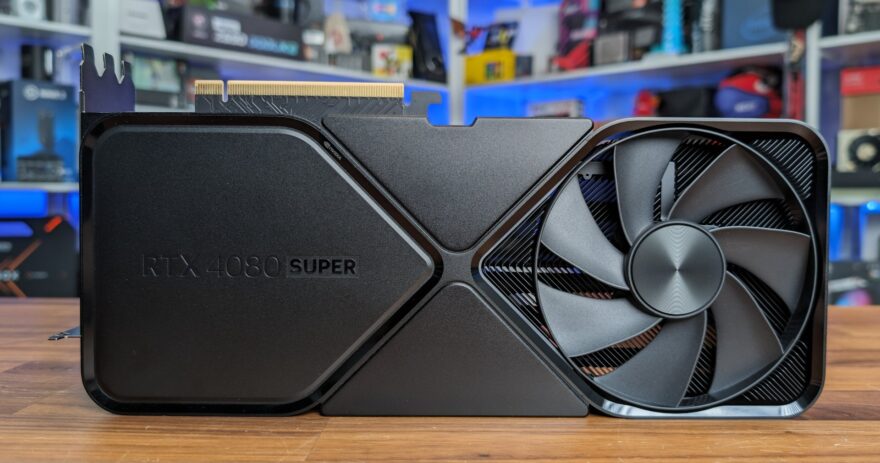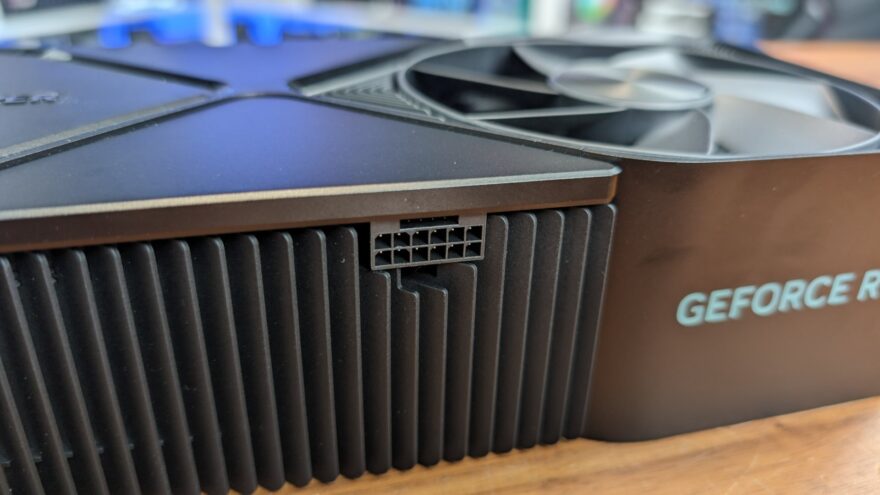Nvidia RTX 4080 Super Founders Edition Graphics Card Review
Peter Donnell / 11 months ago
A Closer Look
One of the best things about the Founders Edition cards has to be their design, and while this does look like some previous generations of Founders Edition, you’ll notice that the chrome trim is now gone, and is replaced by a much more menacing-looking all-black design.

This murdered-out look is much more aggressive, but also more stealthy overall. There’s a good mixture of matte finished lightly textured surfaces and gloss on the trim to keep it looking interesting, but there’s no RGB or any bright paintwork, so it should blend into anything from a gaming PC to a work system and look right at home in either.

The RTX 4080 Super looks stunning though, and it features two fans, with a large fan taking up the back of the card on this side.

However, on the reverse, there’s another fan at the other end of the card, so air is pulled through the card in two different directions, with the heatsink featuring angled fins to better direct airflow from the centre of the card out towards the edges.

I love the more premium look of the Founders Edition cards though, as they have an enclosed look that hides a lot of the screws and fittings, and it just looks more modern and stylish than a lot of the “gamer” focused designs that we typically see.

Obviously, being a new Nvidia card, it features the latest 12VHPWR connector, love it or hate it. Personally, I like it, as it means just a single cable is required with a newer PSU and it makes cable management so much easier.

At the back of the card, you’ll find four display outputs, not that this is uncommon these days, but if you’re running a multi-display configuration, you’re well covered.

Stripping the card down, you can see it features a tidy-looking PCB, with a powerful VRM configuration as you would expect from this being a more powerful card overall. Eight 2GB memory ICs are surrounding the GPU, giving the card its 16GB GDDR6X total. There’s also a cut-out in the PCB, allowing the rear fan to push air through the heatsink without compromising on airflow, while also keeping the card a little bit shorter overall.

The card has a surprisingly large amount of high-end capacitors and chokes with the VRM seemingly on both sides of the GPU and PCB, which should help distribute the heat generation throughout the card.

Looking at the interior of the heatsink, there are multiple nickel-plated contact surfaces with embedded heatpipes running throughout the cooler, ensuring all components such as the GPU, memory and capacitors are all cooled.

There are additional sections of thermal material on the shroud too, which allows the metal casing to act as an extension of the heatsink.




















